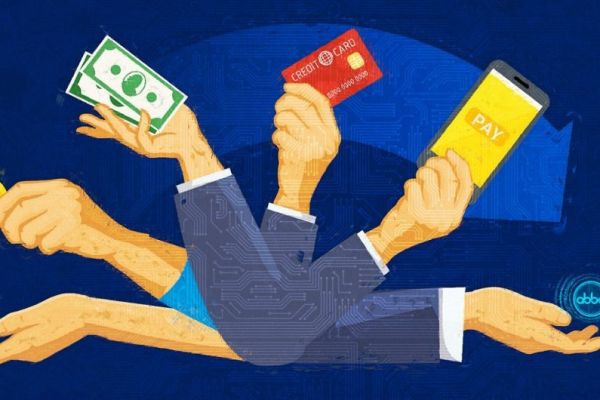Introduction
Throughout history, the concept of money and its form of currency has undergone remarkable transformations. From ancient civilizations to the modern digital era, each epoch has shaped the way people exchange goods and services. This article explores the evolution of currency through various eras, shedding light on how humanity's monetary systems have evolved over time.
Barter and Commodity Money Era
In the earliest days of human civilization, barter served as the primary means of trade. People exchanged goods directly for other goods without a standardized unit of value. However, this system had limitations due to the lack of a common measure of worth. Commodity money emerged as an improvement, where valuable items such as shells, beads, or precious metals were used as a medium of exchange. Ancient civilizations like the Sumerians, Egyptians, and Greeks employed commodity money, paving the way for the concept of currency.
Metal Coinage Era
The metal coinage era marked a significant leap forward in the evolution of currency. Around 600 BCE, the Lydians in present-day Turkey minted the first standardized coins made of electrum, a natural alloy of gold and silver. These coins were stamped with the state's emblem to guarantee their authenticity and uniformity, making trade more efficient and fostering economic growth. Metal coinage became widely adopted in ancient Greece, Rome, and other empires, solidifying its importance in shaping the world's monetary systems.
Paper Money Era
Paper money, as we know it today, originated in China during the Tang Dynasty (618-907 CE). Merchants and traders faced the difficulty of carrying heavy metal coins over long distances, leading to the issuance of promissory notes and certificates representing stored metal coins in Chinese warehouses. This early form of paper money was later expanded under the Song Dynasty, becoming more widely accepted as a convenient medium of exchange. The concept of paper money gradually spread to the Middle East and Europe, revolutionizing global trade and finance.
Age of Banking and Central Banking Era
With the rise of banking institutions during the Renaissance, a new era in currency evolution began. Banks issued banknotes representing a claim to a specific amount of precious metals held in their vaults. Over time, these banknotes gained trust and recognition, becoming more widely circulated than physical coins. The establishment of central banks in the 17th and 18th centuries further stabilized currencies and facilitated monetary policies, leading to the formation of modern monetary systems.
Fiat Money and Digital Currency Era
In the 20th century, fiat money emerged as a dominant form of currency worldwide. Fiat money is not backed by physical commodities but derives its value from government decree and public trust. Countries abandoned the gold standard, allowing central banks to control the money supply and stabilize economies. The late 20th century saw the rise of digital banking and electronic transactions, further transforming the way currency is exchanged. Today, the advent of cryptocurrencies, like Bitcoin and Ethereum, challenges traditional notions of money, ushering in a new era of decentralized and digital currencies.
Currency Evolution Timeline: Unveiling Milestones
The Currency Evolution Timeline unveils a series of significant milestones that have shaped the course of monetary history. From the introduction of metal coins by the Lydians in the 7th century BCE to the issuance of paper money during the Tang Dynasty in China, each era marked a leap in currency's evolution. The timeline showcases how societies adapted to changing economic landscapes and technological advancements.
Historical Currency Development: Coins, Notes, and Beyond
Historical Currency Development takes us on a journey through the diverse forms of currency that have emerged over the centuries. Ancient coins made from valuable metals represented a standardized unit of value. As societies expanded, paper money emerged, transforming the way people conducted trade. The development of banking institutions further shaped the concept of currency, introducing checks and promissory notes.
Modern Digital Transactions: The Digital Revolution
The Modern Digital Transactions section dives into the digital revolution that has redefined currency in recent times. With the advent of the internet and advanced technology, digital currencies like Bitcoin and blockchain technology have emerged, offering decentralized alternatives to traditional forms of money. This shift has revolutionized the way we perceive and engage with currency.
Monetary Innovation: Navigating New Possibilities
Monetary Innovation explores the dynamic landscape of currency, where financial institutions and governments continually seek innovative ways to enhance economic systems. From the introduction of central banking systems to the implementation of monetary policies, these innovations have profound implications for a nation's economy and currency value.
Economic Evolution: Currency's Role in Growth
The Economic Evolution section sheds light on the intertwined relationship between currency and economic development. Currency plays a pivotal role in facilitating economic growth, trade, and investment. The evolution of currency reflects the shifting economic paradigms and global interconnectedness that characterize different eras.
Currency Transformation: Adapting to Change
Currency Transformation encapsulates the adaptability of currency in response to changing societal needs. The transition from physical coins and paper money to digital forms of currency highlights the flexibility and resilience of monetary systems. This transformation underscores the importance of currency's ability to evolve alongside technological progress.
Money Through the Ages: A Reflection of Society
Money Through the Ages provides a reflective journey into the ways currency mirrors the values, beliefs, and societal norms of different civilizations. It serves as a mirror reflecting cultural, economic, and social dynamics, showcasing how currency has transcended its utilitarian function to become a cultural artifact.
Economic Evolution: Currency's Role in Growth
The Economic Evolution section sheds light on the intertwined relationship between currency and economic development. Currency plays a pivotal role in facilitating economic growth, trade, and investment. As civilizations expanded, the need for standardized units of value became increasingly evident. This led to the minting of coins, which allowed for more efficient trade and commerce. The availability of a reliable currency fostered economic exchanges and contributed to the rise of prosperous civilizations.
Throughout history, currencies have undergone devaluations, revaluations, and even collapses, often with far-reaching consequences for economies. The establishment of central banking systems and the implementation of monetary policies aimed to stabilize currencies and manage inflation. These developments marked significant steps in the Economic Evolution of currency, influencing financial systems and shaping economic landscapes.
Currency Transformation: Adapting to Change
Currency Transformation encapsulates the adaptability of currency in response to changing societal needs. The evolution of currency is marked by various transformations that reflect advancements in technology, shifts in economic systems, and changes in consumer behavior. The transition from commodity-backed currencies, such as the gold standard, to fiat currencies signaled a fundamental shift in how value is assigned to money.
In recent decades, the rise of digital currencies and electronic payment methods has brought about yet another transformative wave. Cryptocurrencies like Bitcoin, with their decentralized and secure nature, have challenged traditional notions of currency and prompted discussions about the future of money. The concept of programmable money, enabled by blockchain technology, has opened up new possibilities for smart contracts, automated transactions, and financial inclusivity.
Money Through the Ages: A Reflection of Society
Money Through the Ages provides a reflective journey into the ways currency mirrors the values, beliefs, and societal norms of different civilizations. In ancient cultures, coins often bore the likenesses of rulers and deities, reflecting the intertwined relationship between power, authority, and currency. The designs, materials, and symbols used on currency provide insights into the cultural and artistic achievements of a particular era.
Currency has also been a tool for propaganda, commemoration, and cultural expression. Paper money, for instance, has been used to convey political messages, celebrate historical events, and showcase national identity. The evolution of currency design and imagery offers a unique lens through which to explore the social and political dynamics of different periods.
Conclusion
The evolution of currency mirrors the evolution of human civilization itself. From bartering goods to the advent of digital cryptocurrencies, the journey of money has been one of innovation and adaptation. Each era's currency has played a vital role in shaping economies and societies, proving that the concept of money is fluid and continuously evolving. As we step into the digital age, the future of currency remains exciting and uncertain, as new technologies and economic paradigms shape the currency of tomorrow.
 Bitcoin: $97571.69 1.42%
Bitcoin: $97571.69 1.42%  Ethereum: $3404.51 2.8%
Ethereum: $3404.51 2.8%  Tether: $1.00 0.12%
Tether: $1.00 0.12%  Solana: $255.77 0.46%
Solana: $255.77 0.46%  BNB: $652.76 4.53%
BNB: $652.76 4.53%  XRP: $1.45 1.4%
XRP: $1.45 1.4%  Dogecoin: $0.42 3.17%
Dogecoin: $0.42 3.17%  USDC: $1.00 0.02%
USDC: $1.00 0.02%  Cardano: $1.04 7.05%
Cardano: $1.04 7.05%  Lido Staked ETH: $3387.70 2.31%
Lido Staked ETH: $3387.70 2.31%  TRON: $0.21 6.56%
TRON: $0.21 6.56%  Avalanche: $41.70 5.37%
Avalanche: $41.70 5.37%  Stellar: $0.50 67.83%
Stellar: $0.50 67.83%  Shiba Inu: $0.00 1.8%
Shiba Inu: $0.00 1.8%  Wrapped Bitcoin: $97450.17 1.31%
Wrapped Bitcoin: $97450.17 1.31%  Polkadot: $8.45 33.88%
Polkadot: $8.45 33.88%  Chainlink: $17.43 11.44%
Chainlink: $17.43 11.44%  Bitcoin Cash: $504.71 3.28%
Bitcoin Cash: $504.71 3.28%  UNUS SED LEO: $8.61 1.47%
UNUS SED LEO: $8.61 1.47%  NEAR Protocol: $6.12 7.48%
NEAR Protocol: $6.12 7.48%  Litecoin: $97.88 8.39%
Litecoin: $97.88 8.39%  Uniswap: $10.83 13.99%
Uniswap: $10.83 13.99%  Multi Collateral DAI: $1.00 0.02%
Multi Collateral DAI: $1.00 0.02%  Internet Computer: $11.25 10.5%
Internet Computer: $11.25 10.5%  Crypto.com Coin: $0.19 2.54%
Crypto.com Coin: $0.19 2.54%  Sp8de: $0.59 12.87%
Sp8de: $0.59 12.87%  Ethereum Classic: $29.49 5.34%
Ethereum Classic: $29.49 5.34%  Artificial Superintelligence Alliance: $1.36 9.89%
Artificial Superintelligence Alliance: $1.36 9.89%  VeChain: $0.04 27.14%
VeChain: $0.04 27.14%  Filecoin: $5.35 12.4%
Filecoin: $5.35 12.4%  Stacks: $2.06 5.51%
Stacks: $2.06 5.51%  OKB: $50.51 9.74%
OKB: $50.51 9.74%  Monero: $160.01 0.71%
Monero: $160.01 0.71%  Aave: $175.31 5.82%
Aave: $175.31 5.82%  Algorand: $0.30 22.75%
Algorand: $0.30 22.75%  Fantom: $0.87 19.59%
Fantom: $0.87 19.59%  The Graph: $0.24 10.75%
The Graph: $0.24 10.75%  Hedera Hashgraph: $0.15 10.31%
Hedera Hashgraph: $0.15 10.31%  Injective: $27.69 12.38%
Injective: $27.69 12.38%  Cosmos: $8.11 10.58%
Cosmos: $8.11 10.58%  THORChain: $5.61 5.65%
THORChain: $5.61 5.65%  THETA: $1.89 11.42%
THETA: $1.89 11.42%  MANTRA DAO: $3.61 1.32%
MANTRA DAO: $3.61 1.32%  Raydium: $5.96 1.7%
Raydium: $5.96 1.7%  Maker: $1641.05 0.16%
Maker: $1641.05 0.16%  Arweave: $21.98 24.07%
Arweave: $21.98 24.07%  Bitcoin SV: $70.46 3.89%
Bitcoin SV: $70.46 3.89%  KuCoin Token: $11.42 2.95%
KuCoin Token: $11.42 2.95%  Polygon: $0.56 20.73%
Polygon: $0.56 20.73%  Flow: $0.83 14.15%
Flow: $0.83 14.15%  Quant: $100.65 16.68%
Quant: $100.65 16.68%  Gala: $0.03 14.05%
Gala: $0.03 14.05%  Lido DAO: $1.33 8.55%
Lido DAO: $1.33 8.55%  EOS: $0.76 6.51%
EOS: $0.76 6.51%  Tezos: $1.13 2.51%
Tezos: $1.13 2.51%  Neo: $14.46 8.28%
Neo: $14.46 8.28%  Axie Infinity: $6.63 11.48%
Axie Infinity: $6.63 11.48%  Helium: $5.78 5.77%
Helium: $5.78 5.77%  The Sandbox: $0.41 14.09%
The Sandbox: $0.41 14.09%  Decentraland: $0.50 17.68%
Decentraland: $0.50 17.68%  GateToken: $10.96 8.19%
GateToken: $10.96 8.19%  Akash Network: $3.90 4.11%
Akash Network: $3.90 4.11%  AIOZ Network: $0.81 11.67%
AIOZ Network: $0.81 11.67%  eCash: $0.00 2.05%
eCash: $0.00 2.05%  Nexo: $1.35 3.5%
Nexo: $1.35 3.5%  Pendle: $5.28 4.82%
Pendle: $5.28 4.82%  MultiversX: $35.45 16.37%
MultiversX: $35.45 16.37%  Mina: $0.72 6%
Mina: $0.72 6%  FTX Token: $2.47 2.55%
FTX Token: $2.47 2.55%  Conflux: $0.17 9.26%
Conflux: $0.17 9.26%  Zcash: $47.61 4.8%
Zcash: $47.61 4.8%  Chiliz: $0.08 10.5%
Chiliz: $0.08 10.5%  IOTA: $0.22 18.52%
IOTA: $0.22 18.52%  Gnosis: $272.76 4.64%
Gnosis: $272.76 4.64%  Oasis: $0.10 12.99%
Oasis: $0.10 12.99%  XinFin Network: $0.05 16.33%
XinFin Network: $0.05 16.33%  SuperVerse: $1.32 6.01%
SuperVerse: $1.32 6.01%  PancakeSwap: $2.16 10.26%
PancakeSwap: $2.16 10.26%  Nervos Network: $0.01 5.76%
Nervos Network: $0.01 5.76%  Kusama: $39.05 77.06%
Kusama: $39.05 77.06%  Curve DAO Token: $0.50 11.03%
Curve DAO Token: $0.50 11.03%  Compound: $63.63 17.65%
Compound: $63.63 17.65%  Kava: $0.49 6.44%
Kava: $0.49 6.44%  TrueUSD: $1.00 0.07%
TrueUSD: $1.00 0.07%  NXM: $73.21 4.99%
NXM: $73.21 4.99%  Theta Fuel: $0.07 4.81%
Theta Fuel: $0.07 4.81%  DeXe: $8.23 1.3%
DeXe: $8.23 1.3%  1inch Network: $0.36 5.62%
1inch Network: $0.36 5.62%  Synthetix: $1.98 9.7%
Synthetix: $1.98 9.7%  Zilliqa: $0.02 14.05%
Zilliqa: $0.02 14.05%  WOO: $0.24 10.34%
WOO: $0.24 10.34%  Celo: $0.79 9.34%
Celo: $0.79 9.34%  Reserve Rights: $0.01 8.65%
Reserve Rights: $0.01 8.65%  Trust Wallet Token: $1.01 4.11%
Trust Wallet Token: $1.01 4.11%  Livepeer: $11.59 9.94%
Livepeer: $11.59 9.94%  IoTeX: $0.04 3.89%
IoTeX: $0.04 3.89%  Amp: $0.01 7.62%
Amp: $0.01 7.62%  Enjin Coin: $0.23 13.43%
Enjin Coin: $0.23 13.43%  Holo: $0.00 9.63%
Holo: $0.00 9.63%  Dash: $32.88 11.52%
Dash: $32.88 11.52% 








